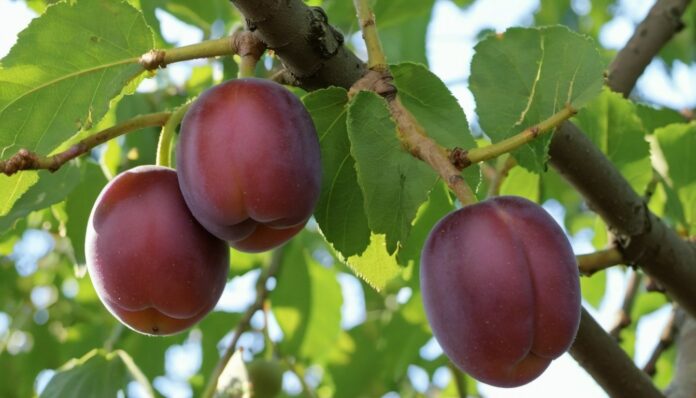Plums are juicy fruits that belong to the Prunus genus of plants, closely related to cherries and peaches. They come in a variety of colors, including red, purple, yellow, and green, and are prized for their sweet and tart flavor. Plums are rich in vitamins, minerals, and antioxidants, making them a nutritious addition to any diet.
They can be eaten fresh or dried and are commonly used in jams, jellies, and desserts. Plum trees are cultivated in many parts of the world, with China being the largest producer of plums globally.
Interesting Facts About Plums
- Plums belong to the same family as peaches, cherries, and almonds, known as the Rosaceae family.
- There are over 2,000 varieties of plums grown worldwide, ranging in color, size, and flavor.
- Plums are believed to have originated in the region between the Caspian Sea and the Black Sea, known as the Caucasus Mountains.
- Plums are classified into three main types: Japanese plums, European plums, and American plums.
- The scientific name for plum trees is Prunus domestica.
- Plums are botanically classified as drupes, which are fruits with a single seed surrounded by a fleshy outer layer.
- Plums are high in antioxidants, such as vitamin C and phenolic compounds, which help protect against oxidative stress and inflammation.
- Plums are a good source of dietary fiber, which aids in digestion and promotes bowel regularity.
- Dried plums are commonly known as prunes and are revered for their laxative properties and ability to relieve constipation.
- Plums have a low glycemic index, making them suitable for individuals with diabetes or those watching their blood sugar levels.
- Plum trees can live for up to 30 years or more and typically begin producing fruit within three to six years of planting.
- Plum blossoms are fragrant and attract bees and other pollinators, aiding in fruit production.
- Plums are often used in traditional medicine to treat ailments such as coughs, sore throats, and skin conditions.
- The color of a plum’s skin can vary depending on the variety, ranging from deep purple to golden yellow.
- Plum pits contain amygdalin, a compound that releases cyanide when ingested in large quantities, although the risk of poisoning from eating plum pits is low.
- The flavor of plums can range from sweet to tart, depending on the variety and ripeness of the fruit.
- Plums are commonly dried to make prunes, which have a concentrated sweetness and chewy texture.
- Plum trees require well-drained soil and full sun to thrive, although they can tolerate a range of soil types and climates.
- Plums are often eaten fresh as a snack or added to salads, yogurt, and cereal for a burst of flavor and nutrition.
- Plum trees bloom in early spring, producing clusters of delicate white or pink flowers that herald the arrival of warmer weather.
- Plums are harvested when fully ripe and can be stored in the refrigerator for up to two weeks.
- Plum trees are self-pollinating, meaning they can produce fruit without the need for cross-pollination from another tree.
- Plums are rich in vitamins and minerals, including vitamin K, potassium, and manganese, which are essential for bone health and muscle function.
- Plums are often used in savory dishes, such as sauces, chutneys, and marinades, to add sweetness and acidity.
- Plum trees are susceptible to pests and diseases such as plum curculio, brown rot, and bacterial leaf spot, requiring careful monitoring and management.
- Plums are believed to have been cultivated by ancient civilizations such as the Egyptians, Greeks, and Romans, who prized them for their flavor and medicinal properties.
- Plum pits can be crushed and used as a natural exfoliant in skincare products or to make homemade face masks.
- Plums are sometimes used to make alcoholic beverages such as plum wine, brandy, and schnapps.
- Plums are often included in fruit salads, desserts, and baked goods such as pies, tarts, and cobblers for their juicy texture and sweet-tart flavor.
- Plum trees are often grown as ornamental trees in gardens and landscapes for their beautiful flowers and delicious fruit.
